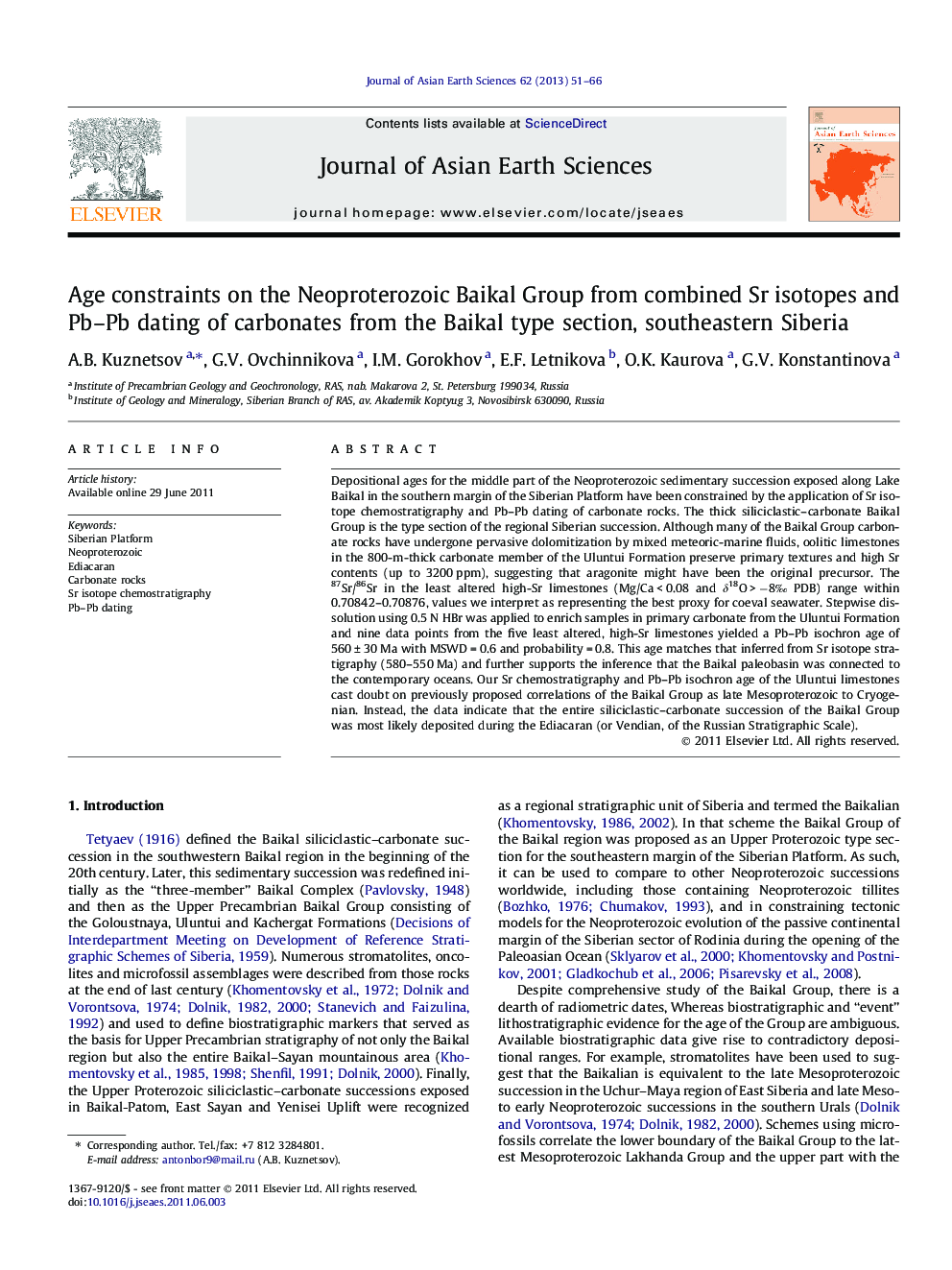| کد مقاله | کد نشریه | سال انتشار | مقاله انگلیسی | نسخه تمام متن |
|---|---|---|---|---|
| 4731260 | 1640403 | 2013 | 16 صفحه PDF | دانلود رایگان |

Depositional ages for the middle part of the Neoproterozoic sedimentary succession exposed along Lake Baikal in the southern margin of the Siberian Platform have been constrained by the application of Sr isotope chemostratigraphy and Pb–Pb dating of carbonate rocks. The thick siliciclastic–carbonate Baikal Group is the type section of the regional Siberian succession. Although many of the Baikal Group carbonate rocks have undergone pervasive dolomitization by mixed meteoric-marine fluids, oolitic limestones in the 800-m-thick carbonate member of the Uluntui Formation preserve primary textures and high Sr contents (up to 3200 ppm), suggesting that aragonite might have been the original precursor. The 87Sr/86Sr in the least altered high-Sr limestones (Mg/Ca < 0.08 and δ18O > −8‰ PDB) range within 0.70842–0.70876, values we interpret as representing the best proxy for coeval seawater. Stepwise dissolution using 0.5 N HBr was applied to enrich samples in primary carbonate from the Uluntui Formation and nine data points from the five least altered, high-Sr limestones yielded a Pb–Pb isochron age of 560 ± 30 Ma with MSWD = 0.6 and probability = 0.8. This age matches that inferred from Sr isotope stratigraphy (580–550 Ma) and further supports the inference that the Baikal paleobasin was connected to the contemporary oceans. Our Sr chemostratigraphy and Pb–Pb isochron age of the Uluntui limestones cast doubt on previously proposed correlations of the Baikal Group as late Mesoproterozoic to Cryogenian. Instead, the data indicate that the entire siliciclastic–carbonate succession of the Baikal Group was most likely deposited during the Ediacaran (or Vendian, of the Russian Stratigraphic Scale).
► The Sr isotope data of the Uluntui carbonates are consistent with ages of 580–550 Ma.
► Pb–Pb isochron age of the Uluntui Formation limestones is 560 ± 30 Ma (MSWD = 0.6).
► The stepwise dissolution helped to obtain meaningful geochronological data.
► The obtained data contradict existing correlations of the Baikal type section.
► The Baikal Group to have been deposited during the Ediacaran (Vendian).
Journal: Journal of Asian Earth Sciences - Volume 62, 30 January 2013, Pages 51–66